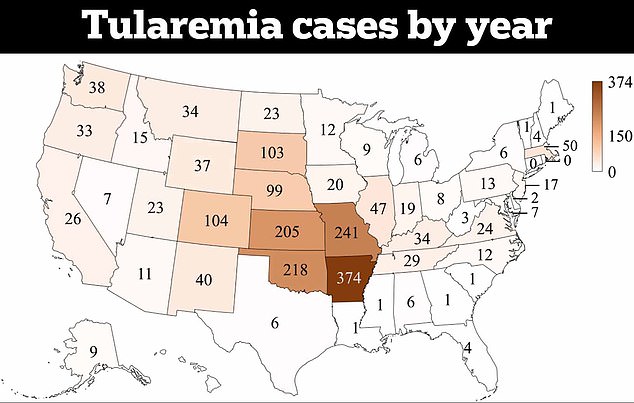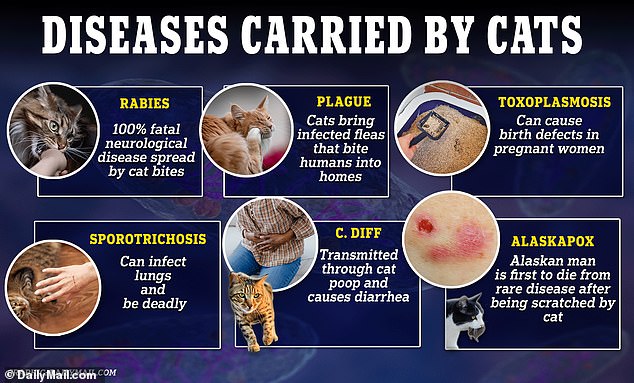Urgent warning to cat owners about recurrence of rare fatal diseases, with TRIPLE cases in parts of US
Cat owners are being warned about the return of a rare, deadly bacterial infection they can contract from their pets, as the number of cases in the United States has tripled.
Minnesota officials are deeply concerned about the disease, called tularemia, after recording a threefold increase in infections, with 21 cases in the state in 2023 compared to the average of seven. And this year they have already recorded just as many.
Cases are also rising nationally, with the US seeing a 60 per cent increase in infections in the decade to 2019. Arkansas, the nation’s hotspot, averages 46 cases per year.
Experts say more contact with wild animals, including between pets, is behind the increase — but say more testing and awareness of the disease could also be fueling the increase.
Felines are common carriers of tularemia – also called rabbit fever – and can contract it if they catch wild animals such as rabbits and mice. Cats can then spread the disease to their owners through bites or scratches, causing blisters and rashes that can lead to life-threatening infections such as sepsis.
Cats can contract tularemia by coming into contact with infected rabbits, mice or other small mammals. They can then transmit it to humans through a scratch (stock).

The above map shows cases of tularemia recorded in every US state from the years 2011 to 2019
Dogs can also contract the infection, although this is less likely as they do not tend to hunt small mammals. The disease can also be transmitted by bites from ticks and deer flies, which pick up the disease by biting infected animals.
Tularemia is not transmitted from person to person.
In a more unusual route of infection, one of the patients in Minnesota contracted the disease this month after mowing over a dead animal and inhaling the aerosolized bacteria.
Another became infected after being bitten by a stray cat.
Patients experience a fever five days after infection, which can then develop into a series of symptoms.
If the disease is not properly diagnosed and treated, it can lead to sepsis – a serious life-threatening infection in which an overreaction of the immune system causes organs to begin to shut down.
In cats, the disease is serious and kills up to 60 percent of felines that do not receive treatment. Warning signs include swelling, anorexia and extreme exhaustion.
The infection is treated with antibiotics such as streptomycin and gentamicin, powerful medications also used to treat tuberculosis and heart infections.
About 200 people in the U.S. develop tularemia each year, mostly in the south-central and western states.
The Illinois Department of Health says five to 15 percent of people whose infections are not treated do not survive.
But among those given antibiotics, they say the mortality rate is less than one percent and few deaths have been reported.

Cats, both wild and domestic, can carry numerous diseases, some of which can be transmitted to humans
Officials said the increase is “likely driven in part by increased veterinary recognition and testing.”
Officials warned of the disease: ‘It is important that pet owners are aware of this disease in their pets because it is also possible for a person to become infected.
‘Pet owners should be aware that cats in particular can become very ill from high fever and quickly succumb to the disease.’
Cats are often carriers of a range of diseases, including rabies, plague and sporotrichosis – a fungus that can infect the lungs.
For many of the conditions, cats normally show no symptoms until the condition is advanced – meaning people may not realize their cat is infected and could have transmitted a disease to humans.
Veterinarians recommend banning cats from hunting and contact with wild animals to reduce the risk of infection.
Owners should also use tick prevention medications for cats, and some veterinarians recommend that people keep their cats indoors at all times.
